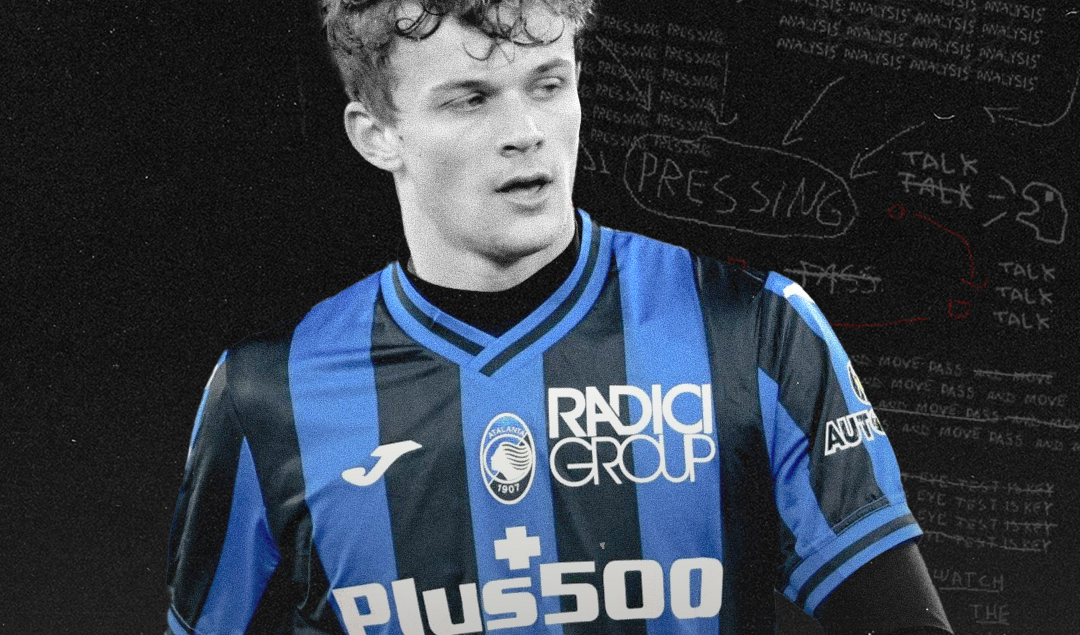Tactical Analysis: Gian Piero Gasperini’s Atalanta
Since taking charge on June 14, 2016, Gian Piero Gasperini has transformed Atalanta from a team that was solely focused on fighting relegation to a team that has grown accustomed to European fooball. Having ended a 26-year European drought in his first season at the helm, Gasperini has taken them to extraordinary heights with the club missing out on intercontinental action on just one occasion, when they finished eighth in 2021/22.
They would bounce back in style with a fifth-place finish to return to the UEFA Europa League, but today, La Dea are clicking on all cylinders and competing on all fronts. Atalanta sit sixth in the table, four points behind Roma, two above Napoli and four above Fiorentina, and even if they do fall out of the top six, they still have various other avenues to qualify for Europe.
After edging Sassuolo 3-1 and Milan 2-1, Atalanta will face off against Fiorentina in the Coppa Italia semifinals across two legs, and if they can make it past La Viola, they will take on Juventus or Lazio in the final. They have excelled in their return to Europe, finishing ahead of Sporting, Sturm Graz and Raków Częstochowa, drawing the first leg of their Round of 16 tie at Sporting before pulling off a comeback 2-1 win via second-half goals from Ademola Lookman and Gianluca Scamacca.
Ademola Lookman: The Journeyman Who Has Found His Home in Atalanta
It was just the fourth time that Atalanta prevailed in a European knockout round match under Gasperini; they thrashed Valencia 8-4 in the 2019/20 Champions League Round of 16, but their first-ever campaign in Europe’s premier competition would come to an end in a narrow 2-1 loss to PSG in the following round. Two years later, Atalanta got past Olympiacos and Bayer Leverkusen before falling to RB Leipzig in the Europa League quarterfinals.
Atalanta will be looking to continue their unbeaten Europa League campaign as they take on Liverpool in the quarterfinals, and with a vast arsenal of attacking resources from Lookman to Teun Koopmeiners to Scamacca to Charles De Ketelaere, they are more than capable of causing a problem for the Reds. Today, we’re going to be delving deep into the tactics behind Gian Piero Gasperini’s Atalanta.
Gasperini has shown a proclivity for a back three since the start of his time in Bergamo, opting for either a 3-4-1-2, 3-4-2-1 or a 3-4-3 formation. Plenty of players have come and gone from Rasmus Højlund to Cristian Romero to Franck Kessié, but Gasperini’s belief in this tactical set-up is yet to be shaken.

In deep possession, Atalanta hold their recognisable three-man defence to at least some extent. What often happens here is that their two central midfielders (often Ederson and Maarten de Roon) will split and sit very wide, thus allowing the wingbacks to sit higher.

While this allows the wingbacks to be higher up the pitch, it also creates immediate width and makes build-up much easier and less risky. By having the midfielders wide, but not very high, Atalanta create easing passing options to the wide area and they also force the opposition to commit a winger to defend wider and thus creating passing options more centrally.
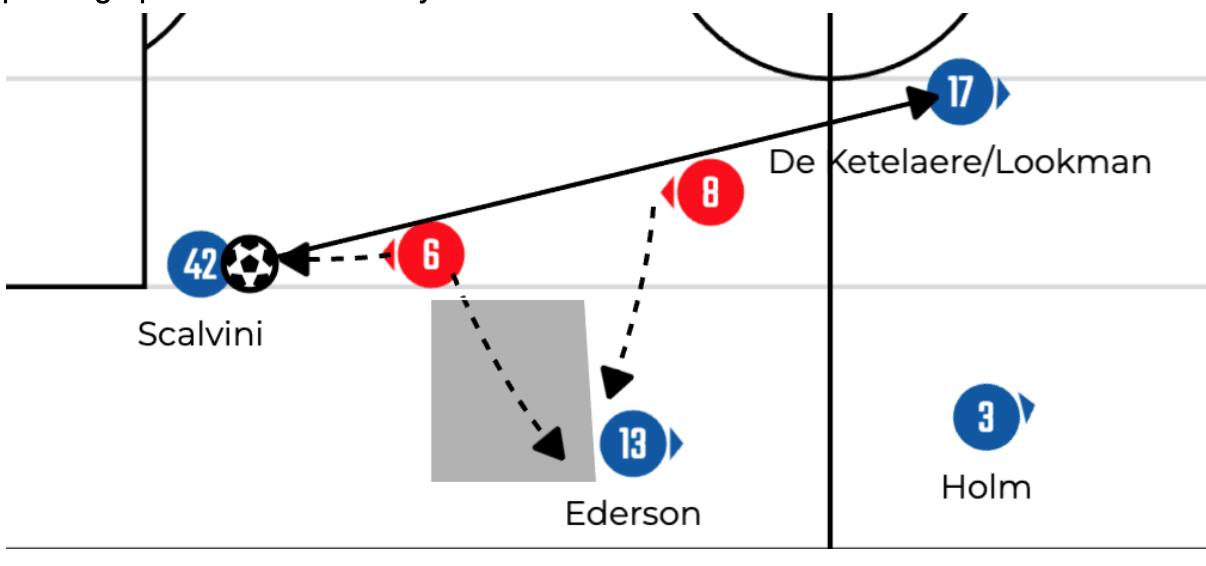
Either the winger is forced wider to cover the pass, or in a worse scenario, a midfielder is forced to cover that passing option out wide which again would leave easy passing options through the middle. We can also see an extra midfielder dropping deep: by dropping deep, the #10 creates an extra and very easy passing option, but he also will shift over often to create a triangle or act as a third man.
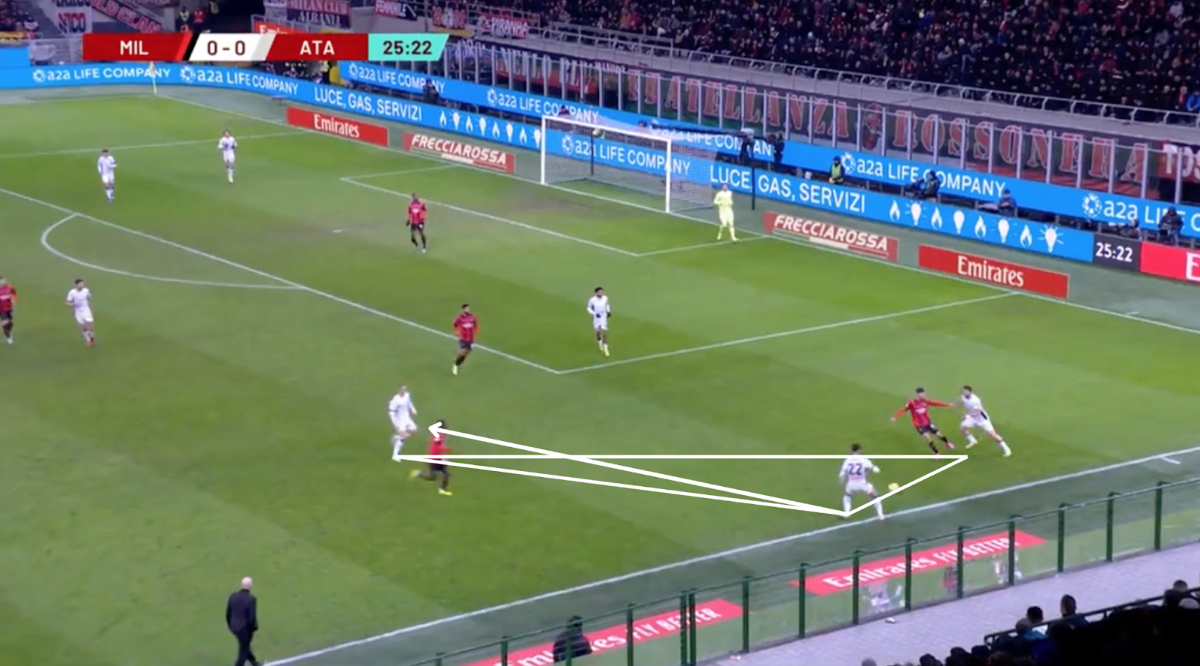
Atalanta’s build-up patterns are heavily predicated upon passing triangles which will either include the centre-back, wingback and midfielder or a fullback and one of the strikers – often Charles De Ketelaere – and that will often see the midfielders and centre-backs interchange positions and catch the opposition by surprise.
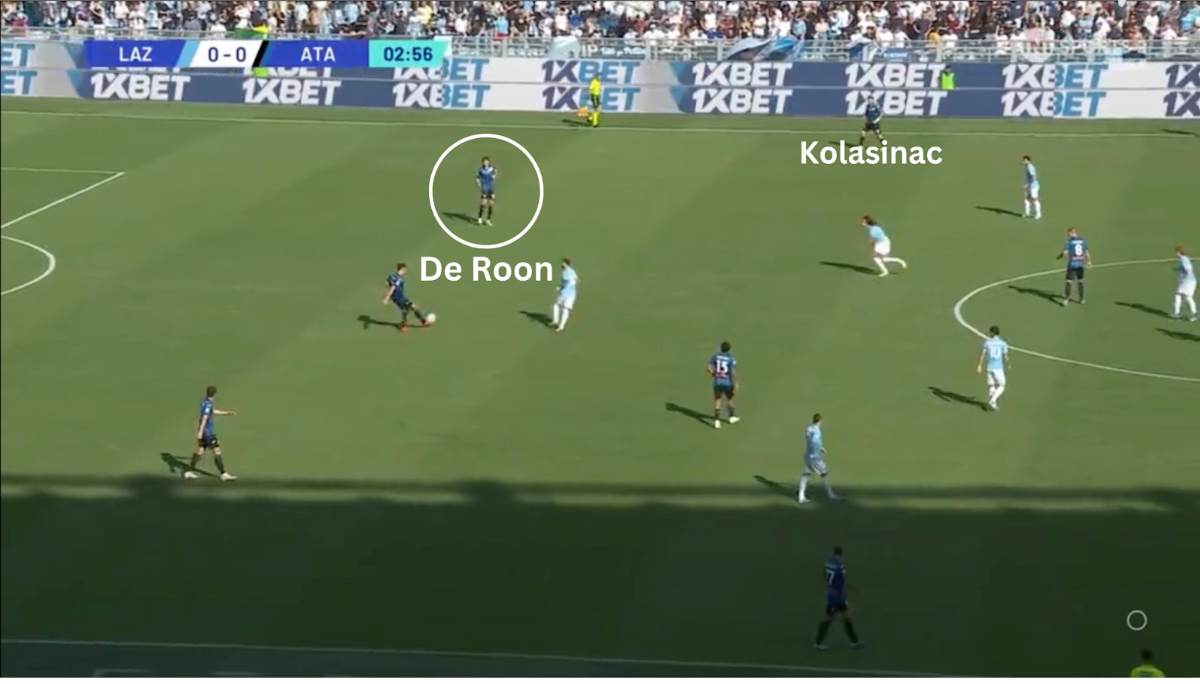
In this case, Marten De Roon opted to rotate next to the defender instead of taking his role out wide, which allowed the more dynamic Sead Kolašinac to go out wide. The fullback-turned-centre-back is more likely to be able to outrun the opposition’s winger and fullback thus in turn creating more direct danger. In attack, Atalanta commit quite a solid number of players forward, up to seven players can be involved in the attack at once. This includes the wingbacks, strikers and all three or at least two of the midfielders.
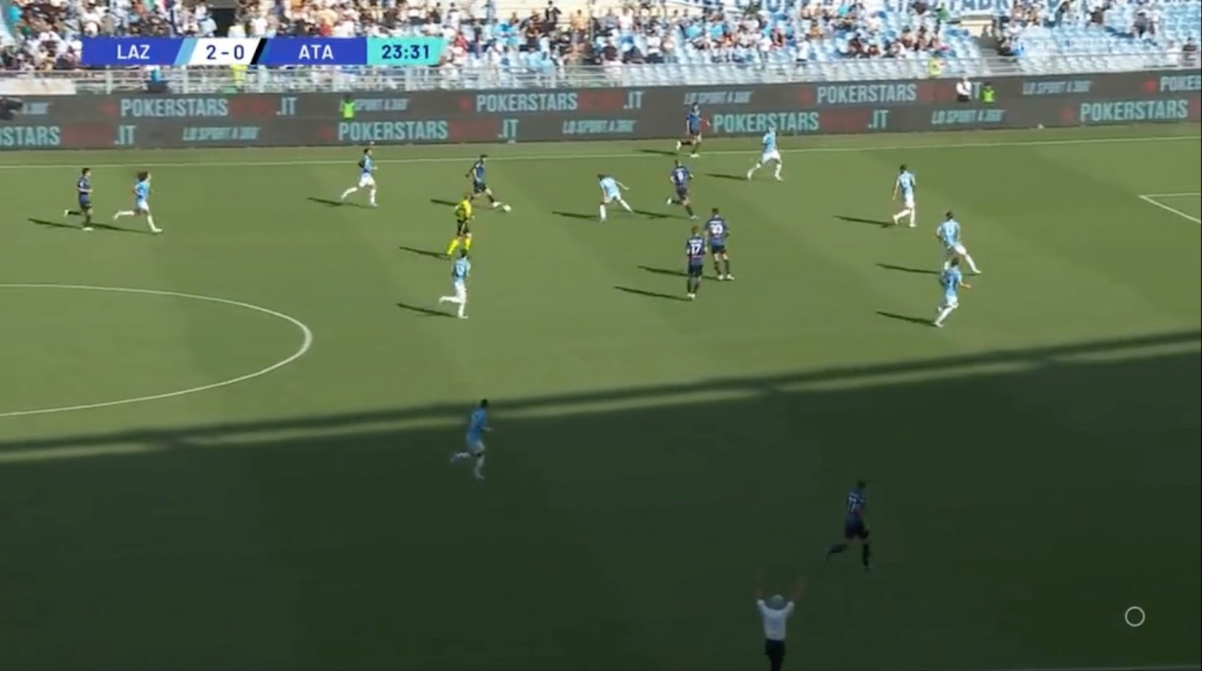
The attacking midfielder will often play off either side, next to both strikers. This means Atalanta will attack with three up front, the three sit quite narrow and close to each other while the fullbacks create width. It’s also in this phase where right-centre-back Giorgio Scalvini steps and sits higher and more inside, taking up a midfield role.
Defensively, Atalanta likes to press on the front foot. At first, they do this with their two strikers and the attacking midfielder. The attacking midfielder will either press through the middle, or as we saw in the Coppa Italia against Milan, he will be the one that presses out wide.

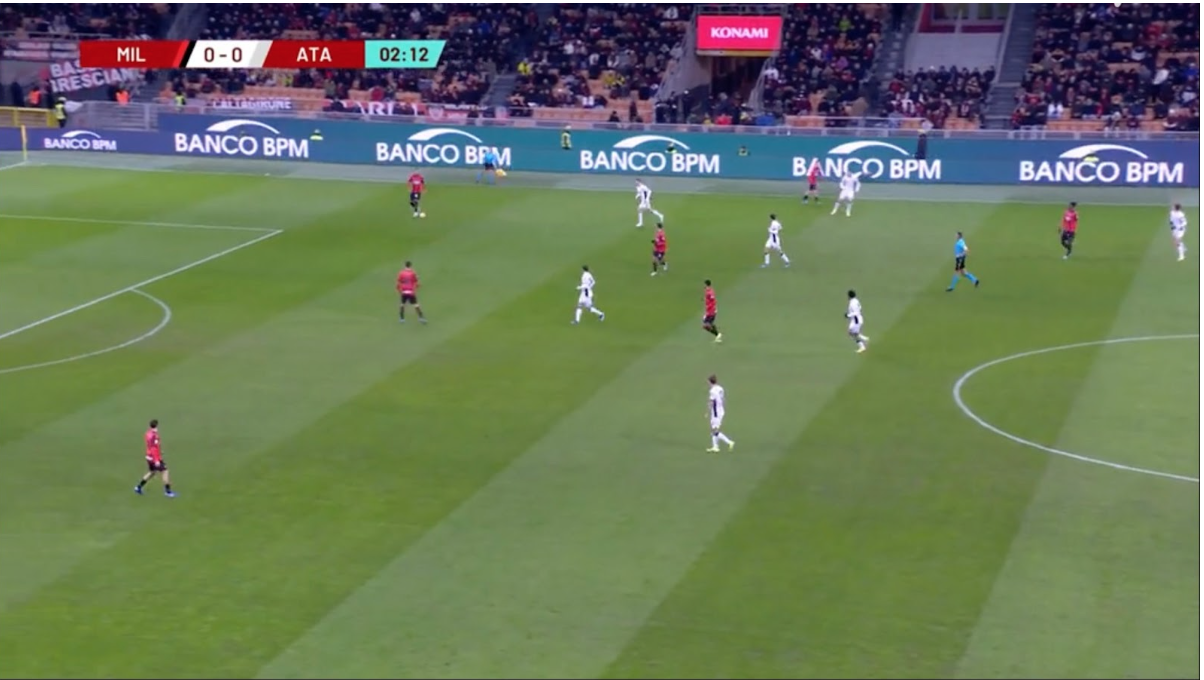
Here we can see Atalanta’s midfielders attach themselves to the opposing deep-sitting midfielders, just another example of how committed they are to the man-marking approach.
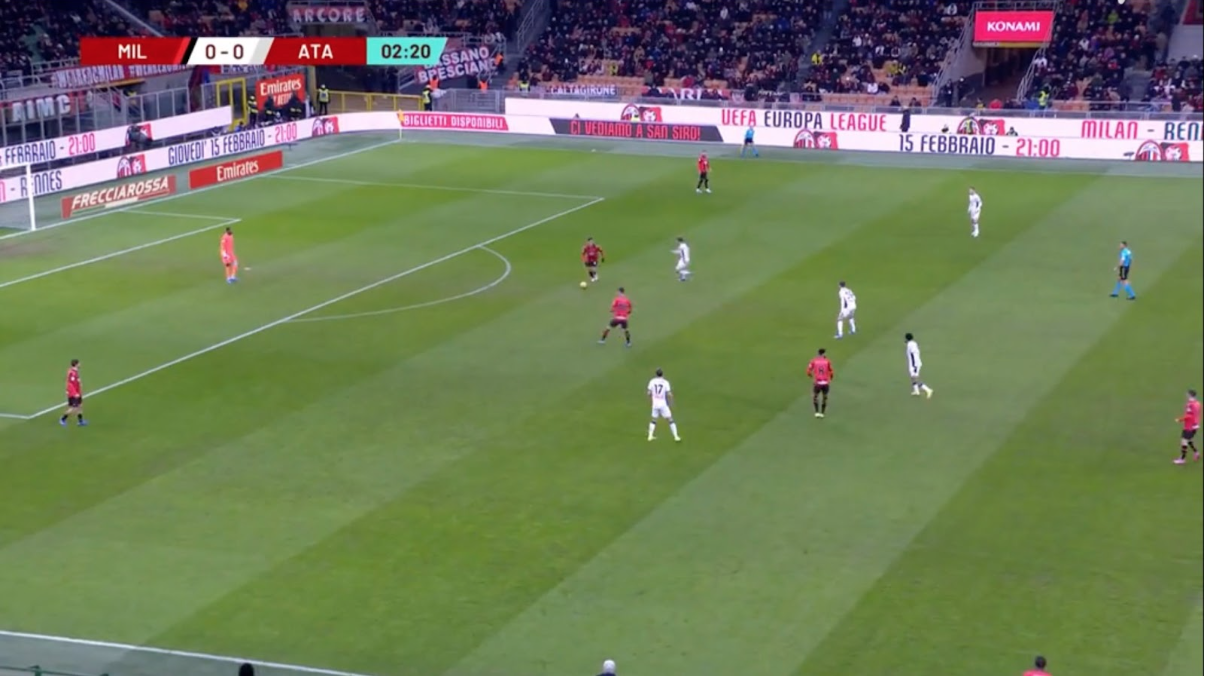
In the above image, Milan’s Tijjani Reijnders drops quite deep to receive the ball, and while the others drop off slightly, De Roon opts to catch up to his man and press him quite hard to hinder the opponent’s build-up.
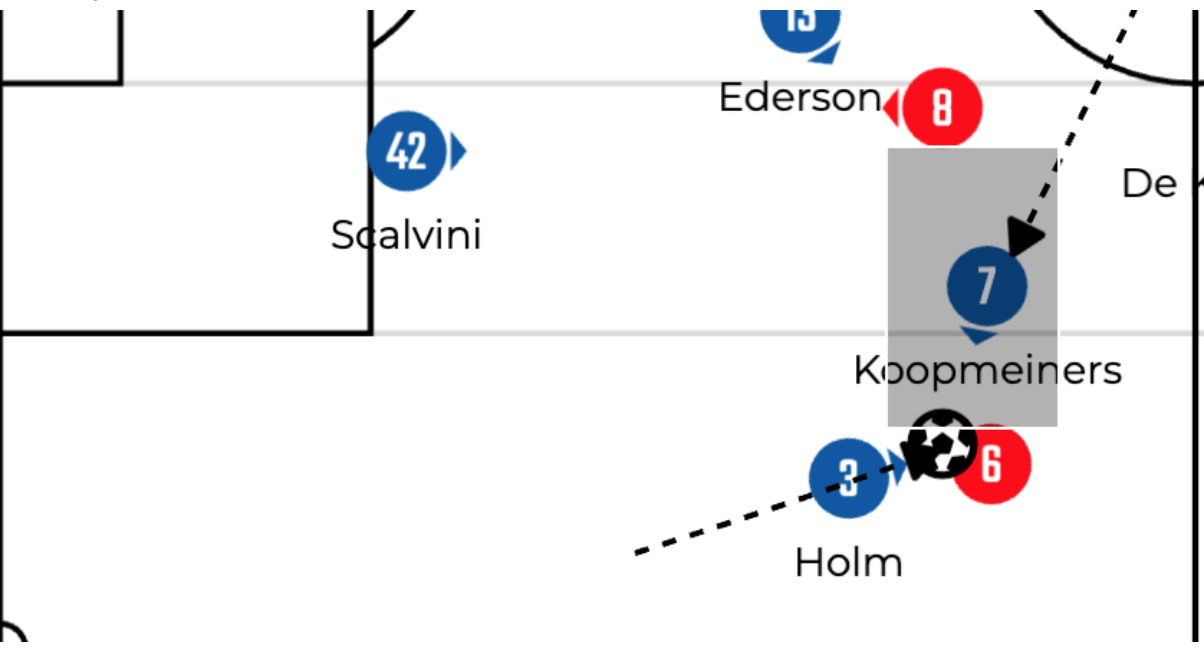
If the opposition progresses play, Koopmeiners will often look to join the deep press and combine with either the fullback or even the centre-back to press the on-the-ball opponent. By Koopmeiners joining in the press he limits the passing options, thus – at least on paper – making the press easier. In deep defence, they sit into their five-man defensive shape, together with all three midfielders dropping deep to aid the defensive block.
With Jürgen Klopp and Christian Streich set to depart Liverpool and Freiburg this summer, it’s only a matter of time before Gian Piero Gasperini becomes the third-longest-serving manager in Europe’s top 5 leagues behind Frank Schmidt at Heidenheim (16 years) and Diego Simeone at Atletico Madrid (12 years). He is approaching 8 years in Bergamo, with nearly twice as long a spell in charge as the second-most tenured manager in Serie A — Milan’s Stefano Pioli — and even at the age of 66, he continues to innovate and find new ways to outwit his opponent in the dugout.
Gasperini was five years old when Atalanta won their first and only top-level silverware, beating Torino 3-1 in the Coppa Italia Final via a hat-trick from Angelo Domenghini. He has come close to ending that drought on two occasions, falling to a 2-0 defeat to Lazio in the 2019 final before losing 2-1 to Juventus two years later, but today, he has a golden opportunity to lead Atalanta to the promised land and win the first trophy of his 20-year managerial career.
By: Teo Slehofer / @TeoSlehofer
Featured Image: @GabFoligno / ANP / Getty Images
